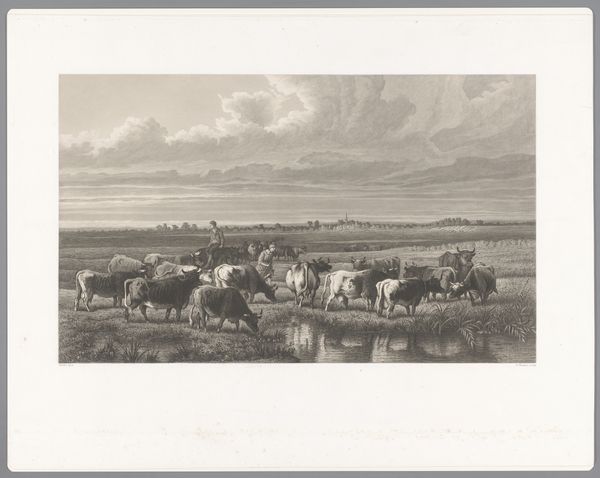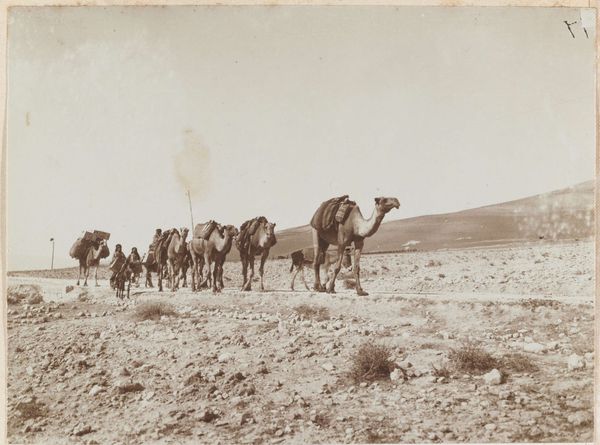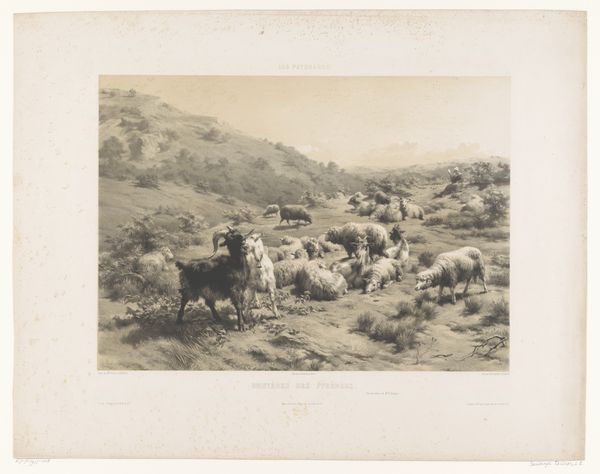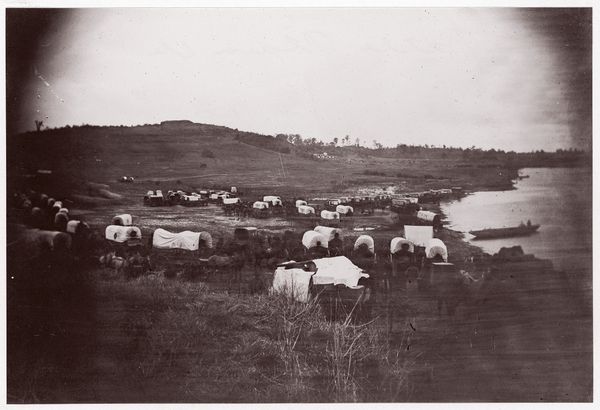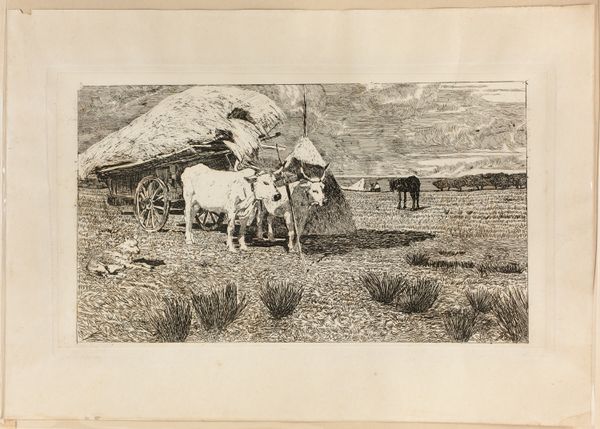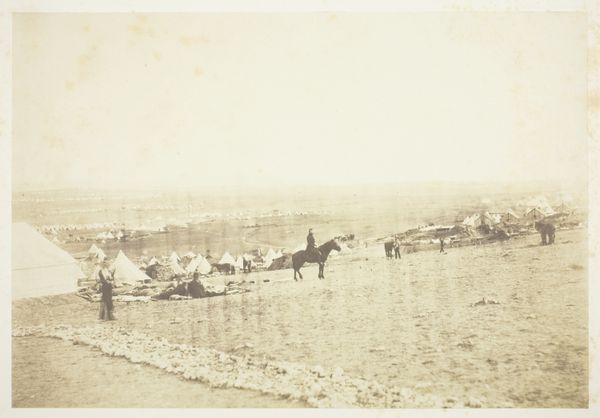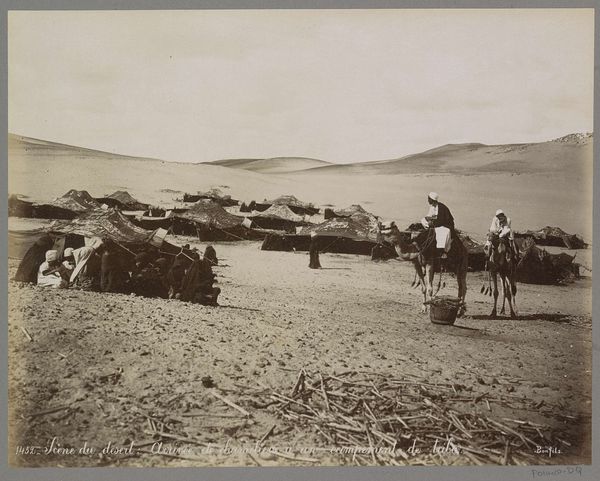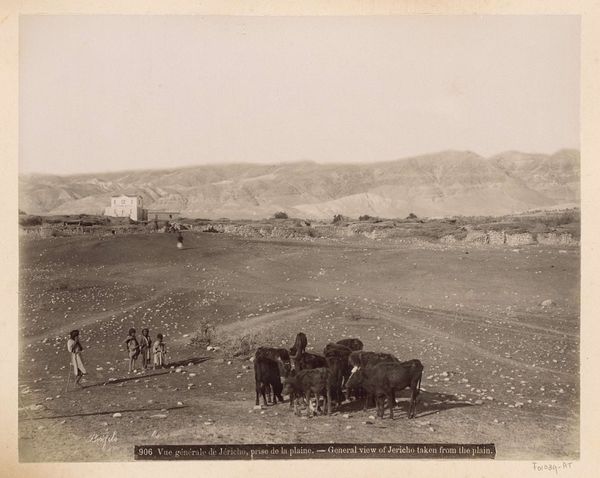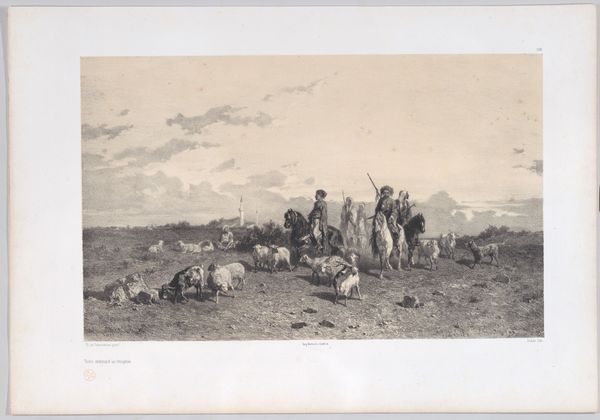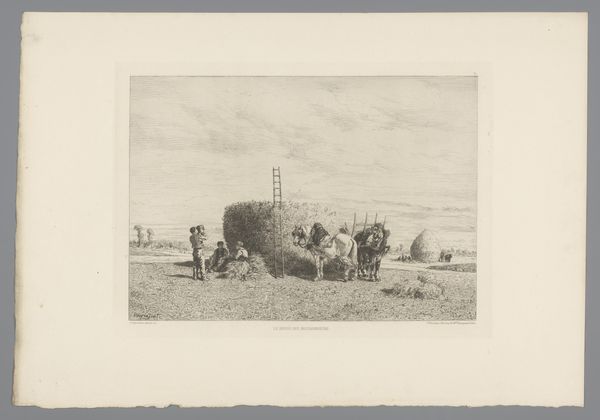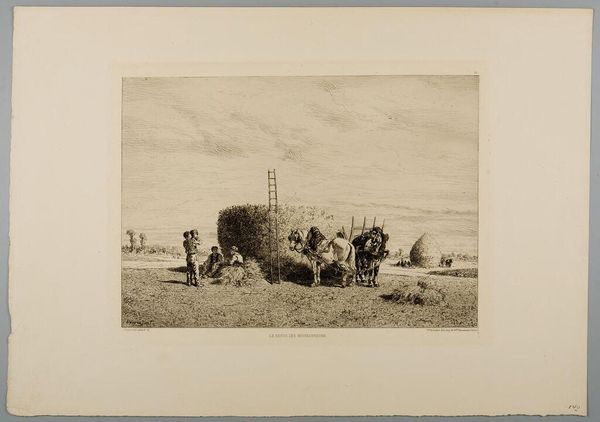
Mormon Emigrant Train, Echo Canyon 1868 - 1872
0:00
0:00
print, photography, gelatin-silver-print
# print
#
landscape
#
photography
#
gelatin-silver-print
#
history-painting
#
regionalism
#
realism
Dimensions: Image: 6.1 × 10.3 cm (2 3/8 × 4 1/16 in.)
Copyright: Public Domain
Curator: This is Charles William Carter's "Mormon Emigrant Train, Echo Canyon," likely created between 1868 and 1872. The print is made using a gelatin-silver process. Editor: My first thought? The overwhelming feeling of vulnerability. They are surrounded by land, but seemingly have very little ownership or control over it. I wonder what that was like to try to survive within that openness. Curator: That tension is palpable. Carter, working from his base in Utah, produced many images that, on the surface, document the westward expansion. But beneath the surface, a critical layer exposes the hardships, religious tensions, and sheer scale of displacement. Consider how the photographic gaze itself can become an instrument of power. Editor: Power, absolutely. I wonder, were these photographs commissioned? Is this documentation meant to evoke pride, or serve as propaganda? Because depending on which, my gut reaction would shift wildly. It is pretty remarkable though; those tiny figures against that landscape make you think about legacy, memory. The idea of writing a history that maybe leaves a few voices out. Curator: Many images like this were circulated widely as stereo cards—a form of early mass media. They played a role in shaping perceptions and often romanticizing or simplifying complex historical events, fitting them neatly into existing cultural narratives. It’s vital to unpack those original contexts. Editor: Simplification. It’s so hard not to do it when we're processing so much at once, though! Makes me appreciate nuance and the patience of sitting with stories to tease all of the parts out. To zoom in on just one covered wagon there and listen closely…it kind of undoes the "history" aspect a bit, which, of course, just brings us even deeper into history, doesn't it? Curator: Precisely. This image offers a poignant moment frozen in time, reminding us that photographs aren't neutral records; they are complex artifacts shaped by intent, circumstance, and their subsequent interpretation. Editor: A moment, yes, meticulously captured, meticulously shaped, and inevitably incomplete. Art makes me feel as though my senses become more highly tuned in; images like this are really good at getting to you. Thank you, art.
Comments
No comments
Be the first to comment and join the conversation on the ultimate creative platform.
